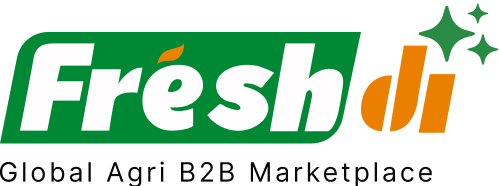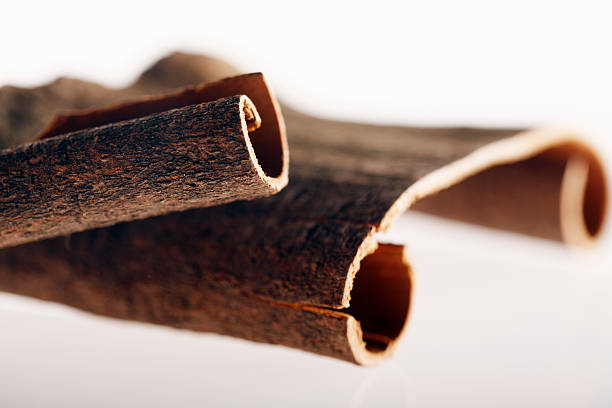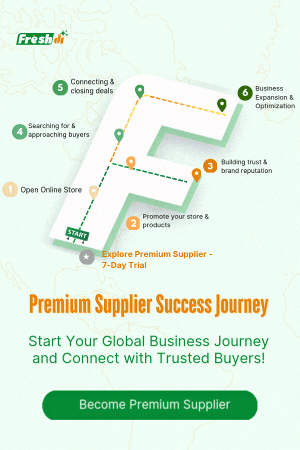Introduction – Italy’s Cinnamon Market by the Numbers
Italy is known for its deep-rooted culinary traditions, but when it comes to cinnamon, this Mediterranean powerhouse isn’t a producer — it’s a major importer. In fact, Italy imported approximately 880 tons of cinnamon in 2024, reflecting not just growth but a four-year streak of increased demand. The value of these imports? A whopping $128 million.
Why such a surge?
Cinnamon is no longer limited to just desserts or holiday treats. From craft cocktails and health drinks to skincare and gourmet snacks, cinnamon is spicing up every corner of the Italian consumer market. But with rising demand comes a pressing need for quality assurance and smart supplier selection — that’s where data-led platforms like Freshdi come in, offering a way to find verified suppliers, track RFQs, and analyze market trends.
So if you’re sourcing cinnamon in Italy, it’s not just about finding any supplier — it’s about identifying the top-performing partners that can meet your quality, volume, and pricing needs.
Deep Dive – Key Production, Export Statistics & Current Demand Data
Let’s get real — Italy doesn’t grow cinnamon. All of its cinnamon supply is imported, mainly from trusted producers around the globe.
Import Overview
- Import Volume (2024): 880 tons
- Import Value (2024): $128 million
- Top Import Sources: Vietnam, Madagascar, and France
Italy’s cinnamon imports have been steadily increasing, driven by both B2B and consumer demand. The country ranks as a top cinnamon importer in the EU, and demand shows no signs of slowing.
Export Overview
Interestingly, while Italy isn’t a producer, it exports cinnamon to neighboring European countries like:
- Greece
- Spain
- Poland
However, 2024 saw a dip in export volume and value, ending four years of growth. Why? Likely due to increased domestic consumption and tighter quality control following fraudulent cinnamon reports.
Current Demand Trends
Platforms like Freshdi show rising RFQs (Request for Quotations) for premium cinnamon — especially Ceylon (True) Cinnamon, known for its delicate flavor and low coumarin content. Buyers are increasingly filtering for:
- Organic Certification
- Pesticide-Free Batches
- Sustainably Sourced Cinnamon
So if you’re a supplier looking to break into the Italian market, or a buyer looking for reliable partners, this is the moment to act smart and data-driven.
Top 9 Verified Cinnamon Suppliers in Italy – Proven Export Performers
These suppliers are recognized on Freshdi for their export performance, verified credentials, and buyer feedback. They’re not just selling cinnamon — they’re delivering trust.
-
Alessia Exporters
Known for high-volume shipments and consistent quality, Alessia Exporters is a go-to for bulk cinnamon supply. -
Demetrio Cocco
Offers curated batches of both Cassia and Ceylon cinnamon, with traceable sourcing and EU certifications. -
IDAV S.P.A
Specializes in cinnamon aroma and extract products, ideal for beverage and cosmetics manufacturers. -
Shamim
This supplier focuses on organic and fair-trade cinnamon, offering flexibility in packaging and labeling. -
Raji
A trusted name in the Italian spice trade, Raji has a decade-long track record of dependable supply. -
Malnad Coffee And Spices
Though based in India, this supplier has a strong export footprint in Italy, known for Ceylon cinnamon sticks and powder. -
RONCHI PIERGIORGIO SAKEER
Offers customized cinnamon solutions for niche markets, including pharmaceutical-grade spice. -
Olives Internatioal
A diversified exporter that includes cinnamon as part of a broader spice and food ingredients portfolio. -
Wanloop International
Known for fast delivery and responsive communication, making them ideal for time-sensitive orders.
Dynamic Ranking Note: Platforms like Freshdi update their “Supplier of the Month/Quarter” rankings based on recent performance, RFQ activity, and buyer satisfaction, so keeping tabs on the latest updates can help you make smarter sourcing decisions.
Market Navigation – Statistical Trends, Pricing Analysis & Export Dynamics
Which Cinnamon Type is in Demand?
Italy’s market skews heavily toward Ceylon Cinnamon for premium applications and Cassia Cinnamon for industrial and affordable food use. Based on RFQs from Freshdi, top preferences include:
- Ceylon Cinnamon Sticks (Grade ALBA & C5) – Preferred for gourmet and health-conscious segments.
- Cassia Powder (Bulk) – Used for mass-market food production, especially biscuits, cereals, and beverages.
- Cinnamon Extracts & Oils – Increasing demand from cosmetics, aromatherapy, and pharma sectors.
Pricing Trends
Let’s talk numbers. Cinnamon pricing in Italy fluctuates based on:
- Seasonal Harvest Cycles in Origin Countries
- Shipping Costs (especially post-pandemic)
- Regulatory Changes (like coumarin limits)
For instance:
- Ceylon Cinnamon: Can fetch up to €15–20/kg for high-grade, organic-certified batches.
- Cassia Cinnamon: Typically priced in the €5–8/kg range for bulk supply.
Buyers use platforms like Freshdi to track historical price data and forecast future costs, enabling better budget planning.
Conclusion – Leveraging Data for Optimized Supply Chains
Italy may not grow cinnamon, but it’s certainly one of Europe’s most vibrant cinnamon import and consumption hubs. With $128 million worth of imports in 2024 and a consumer shift toward healthier, cleaner-label products, the Italian cinnamon market is primed for innovation and quality-driven sourcing.
But here’s the catch — not all cinnamon suppliers are created equal. Amid rising fraud cases and mislabeling scandals, businesses must choose partners that are verified, transparent, and performance-proven.
That’s where platforms like Freshdi shine. With tools to monitor RFQ trends, verify supplier credentials, and access real-time market intelligence, buyers can make smarter, safer, and more profitable decisions.
✅ Cinnamon Buyer’s Checklist – Italy Edition
- ✅ Verify supplier certifications (Organic, Fair Trade, HACCP)
- ✅ Check recent export performance and buyer reviews via Freshdi
- ✅ Prioritize Ceylon cinnamon for premium applications
- ✅ Monitor RFQs and pricing trends monthly
- ✅ Use Freshdi to compare supplier quotes and manage negotiations
🔮 Future Outlook – What’s Ahead for Cinnamon in Italy?
- More Regulation: Expect tighter quality controls and labeling requirements in the EU.
- Higher Demand for Extracts: Growth in wellness, pharma, and cosmetics will boost demand for oil and aroma variants.
- Digital Transformation: Smart sourcing tools like Freshdi will become essential, not optional.
If you’re in the cinnamon trade — whether buyer or seller — now is the time to gear up, get informed, and go digital.
FAQs
1. Why is Italy importing so much cinnamon if it doesn’t produce any?
Because demand is booming! From food and beverages to cosmetics, cinnamon is in high demand across multiple industries in Italy.
2. What’s the difference between Ceylon and Cassia cinnamon?
Ceylon (True) cinnamon is lighter, sweeter, and contains less coumarin — making it healthier and ideal for premium products. Cassia is stronger, cheaper, and used more in bulk applications.
3. How can I trust a cinnamon supplier in Italy?
Use verified platforms like Freshdi to check supplier certifications, past performance, and buyer reviews.
4. Are there seasonal price fluctuations for cinnamon?
Yes. Prices often spike during harvest seasons, shipping bottlenecks, or when supply from origin countries is disrupted.
5. What certifications should I look for when selecting a cinnamon exporter?
Look for Organic, Fair Trade, HACCP, ISO 22000, and sustainable sourcing certifications to ensure quality and compliance.
References
- IndexBox – EU Cinnamon Market Overview 2024
- IndexBox – Italy Cinnamon Market Analysis
- 6wresearch – Italy Cinnamon Market Outlook
- Food Ingredients First – Cinnamon Fraud in EU
- Freshdi – Cinnamon Supplier Listings


